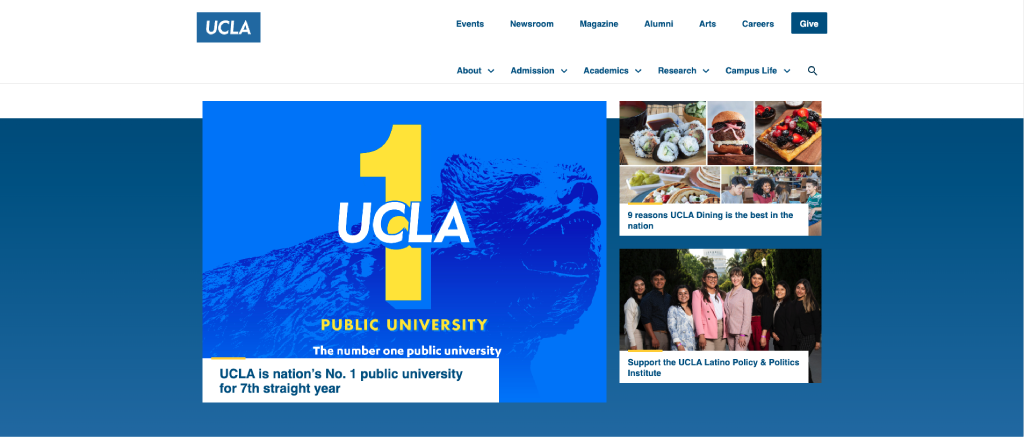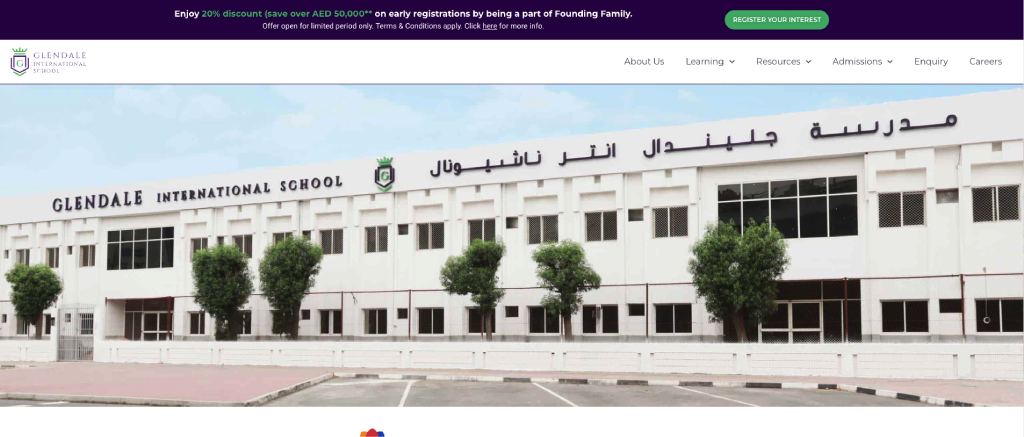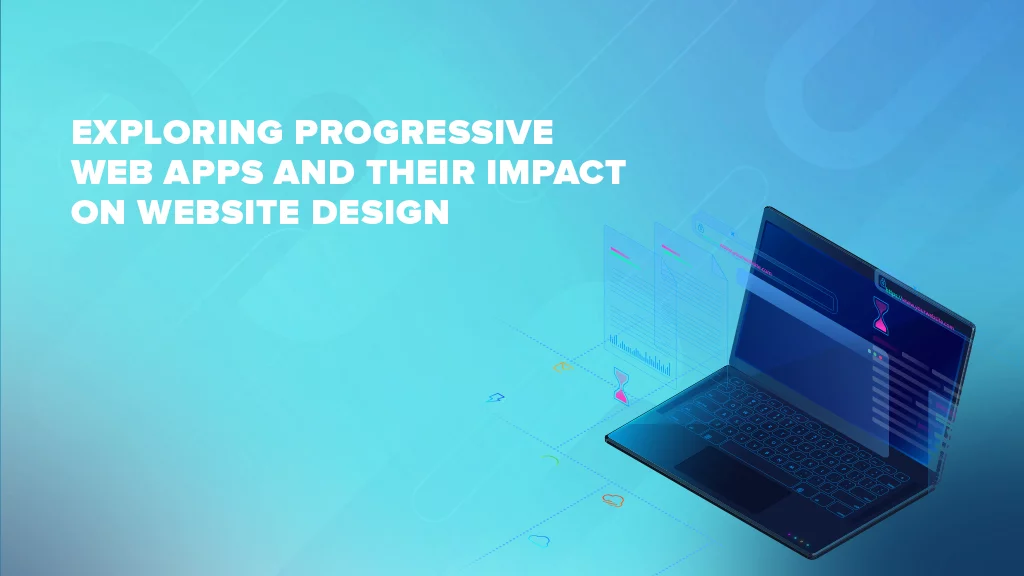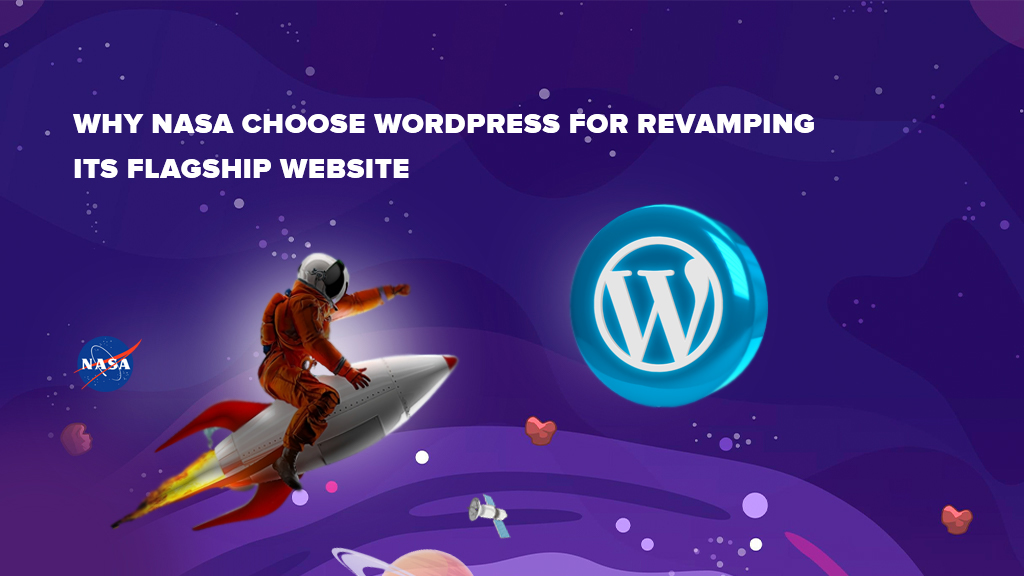Crafting Engaging Educational Websites: From Higher Education to Elementary Schools
In the digital age, a school’s website is often the first point of contact for prospective students, parents, and educators. It’s not just a virtual brochure; it’s a representation of the school’s culture, values, and commitment to education. Let’s explore what makes a school website successful, from higher education institutions to elementary schools, and even online learning platforms.
Higher Education and Professional School Websites
Universities and colleges play a pivotal role in shaping the future of students. Their websites serve as digital gateways to a world of knowledge and opportunity. Here’s what works well when crafting higher education websites:
1. Hero Images:
A captivating hero image showcasing campus life or unique university events can grab the visitor’s attention and give a glimpse of what the institution has to offer.
2. Clean Design:
A clutter-free, easy-to-navigate design ensures that visitors can explore the website with ease, finding the information they need quickly.
3. Intuitive Navigation:
Organizing navigation menus with clear categories such as academics, admission, and athletics, followed by relevant subcategories, ensures that users can easily find what they’re looking for.
Examples
- University of California, Los Angeles

- American University of Sharjah

Elementary and High School Website Designs
For elementary and high schools, the audience is primarily parents and employees. These websites are essential sources of information. Here’s what works well for these institutions:
1. Engaging Visuals:
Use photos and videos of students engaged in learning and play to showcase the school’s environment and educational approach.
2. Calendar Feature:
Ensure that parents can easily access important dates, including breaks, holidays, exams, and school-wide events. A well-maintained calendar is a parent’s best friend.
3. User-Friendly Layout:
Keep the website layout simple and easy to follow. Parents should be able to find essential information quickly.
Examples
- Glendale International School
- Repton Abu Dhabi

Online Education and E-Learning Website Designs
In the era of online education, a thoughtfully designed website is the foundation of any successful platform. Here’s what works well for online learning websites:
1. Minimalist Design:
Clean, minimalist designs with easy-to-read fonts and clear calls to action help students navigate the platform effortlessly.
2. Student Profiles:
Create user-friendly student profiles that serve as hubs for organizing notes, lesson plans, and progress tracking. Gamification elements like badges can boost motivation.
3. Course Browsing:
Make it easy for students to find, understand, and choose courses. Display estimated course duration to help them plan their learning.
Examples
- Nihongo Master

- Zen Academy

Crafting a Winning School Website Design
Regardless of the educational level, your website should aim for universal appeal. Highlight the diversity within your institution and make it clear that everyone is welcome. Use colors, shapes, and imagery to create a memorable brand identity.
Appeal to a Diverse Audience:
Ensure that your website appeals to both students and faculty. Showcase the institution’s achievements, curriculum, and campus beauty.
Color and Shape Branding:
Colors and shapes are essential for branding. Use a signature color scheme and shapes that represent your institution. These visual cues will help make your brand memorable.
In conclusion, your educational website should reflect your institution’s values and strengths. Whether you’re a university, a K-12 school, or an online learning platform, a well-designed website can enhance your brand, attract prospective students, and engage parents and educators. Remember, your website is more than just pixels on a screen; it’s a gateway to knowledge and opportunity.
Promoting Accessibility and Inclusivity in Educational Websites
In our quest to design exceptional school websites, we must not forget the principles of accessibility and inclusivity. These are critical elements that ensure that every visitor, regardless of their abilities, can access and benefit from the information provided.
Accessibility Matters:
An accessible website is one that accommodates users with disabilities, including those with visual, auditory, cognitive, or motor impairments. To achieve accessibility:
Alt Text for Images:
Provide alternative text descriptions for images, ensuring that screen readers can convey the content to visually impaired users.
Captioned Videos:
Include captions for videos, making them accessible to individuals with hearing impairments.
Readable Text:
Use fonts and text sizes that are easy to read, and ensure there is sufficient color contrast to aid those with visual impairments.
Keyboard Navigation:
Ensure that all website functions and features can be accessed and operated using a keyboard, assisting users with motor disabilities.
Consistent Structure:
Maintain a consistent and logical structure throughout the website to help users with cognitive disabilities navigate and understand the content.
Inclusivity Matters:
An inclusive website embraces diversity in its content, making sure that all individuals, regardless of their background or circumstances, feel welcome and represented. To promote inclusivity:
Diverse Imagery:
Use a variety of images that reflect the diversity of your student body and community. Show people from various backgrounds, abilities, and age groups.
Multilingual Options:
Consider offering content in multiple languages to accommodate non-native English speakers and international students.
Support and Resources:
Provide resources and support for individuals with special educational needs. This could include information on special education programs, services, and contacts for assistance.
User-Friendly Tools:
Incorporate tools and features that enhance the user experience for everyone. For example, a text-to-speech option can benefit users with visual impairments, dyslexia, or those who prefer auditory learning.
Ongoing Accessibility Audits:
Regularly review and audit your website for accessibility and inclusivity compliance. Implement changes as needed to ensure a welcoming environment for all.
By incorporating these principles, educational websites can become more than just information hubs; they can become platforms that champion diversity, equality, and learning opportunities for everyone. Let’s strive to build digital spaces where every visitor, regardless of their background or abilities, feels empowered to explore, learn, and thrive.











